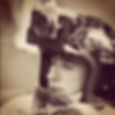
"The feeling of strangeness that overcomes the actor before the camera...is basically of the same kind as the estrangement felt before one's own image in the mirror. but now the reflected image has become separable, transportable. And where is it transported? Before the Public. Never for a moment does the screen actor cease tor be conscious of this fact."
In Benjamin’s 1945 essay, The Work of Art in the Age of Mechanical Reproduction (1935), Benjamin describes the impact that reproduction has had on Art, and on human perception. He describes the loss of the aura in the art and from art objects as being a direct result of the mechanical reproduction of art, especially in regards to film and photography (pg. 3). He claims that by allowing a form of “the original to meet the beholder halfway,” (pg3) it loses its uniqueness because “aura is tied to presence; there can be no replica of it” (pg8). He goes on to discuss the origins of art, which are imbedded in “the fabric of tradition,” the cult, and in the service of ritual (pg5). He describes a major shift in the function of art from having traditional cult based value to today’s standard of art’s exhibition value. In other words art used to be a form of prayer or communication with the supernatural and now it is intended to be put on display, for public consumption. This is further evidence of this Benjamin’s idea on the “loss of aura” in which art has undergone. He borrows a perfectly lovely metaphor from Pirandello about a reflection of ourselves in the mirror: “…the same kind of estrangement felt before one’s own image in the mirror. But now the reflected image has become separable, transportable. And where is it transported? Before the public. Never for a moment does the screen actor cease to be conscious of this fact.”

"Literary license is now founded on polytechnic rather than specialized training and thus becomes common property."
I think Benjamin unknowingly predicted some very poignant changes that have occurred not just for the art world, but for all of society with the astonishingly fast paced development of technology over the last three quarters of a century. The rise of photography to the rise of the camera phone has made everybody a photographer. A phenomenon Benjamin describes “literary license is now founded on polytechnic rather than specialized training and thus becomes common property.” This description couldn’t be more accurate in describing the Instagram, Twitter, Facebook photographers that flood our screens in our contemporary world.
Benjamin’s essay highlights the notion that film allows people to view, experience and create from a supernatural perspective through controlled shooting and editing, a medium which has been placed in the hands of the masses in today’s society thanks to the advances in technology and artistic reproduction. A topic which is thoroughly explored in Vannevar Bush’s 1945 essay, “As We May Think.” In this essay he describes the progress of technology as evolving past the need for developing war technologies into a time of post war peace when the focus of technological advancement can be geared toward other means like social and cultural advancement rather than destruction and war.

“The camera hound of the future wears on his forehead a lump a little larger than a walnut."
Much like Benjamin, Bush makes some striking predictions that describe contemporary gadgets to an uncanny degree of accuracy in his writing. Here is one of the most striking examples: “The camera hound of the future wears on his forehead a lump a little larger than a walnut. It takes pictures 3 millimeters square, later to be projected or enlarged, which after all involves only a factor of 10 beyond present practice. The lens is of universal focus, down to any distance accommodated by the unaided eye, simply because it is of short focal length. There is a built-in photocell on the walnut such as we now have on at least one camera, which automatically adjusts exposure for a wide range of illumination.” This description quite accurately describes the GoPro camera, which as absurd as it may have seemed at one time, is indeed worn on the head! His description of the gadget continues, “There is film in the walnut for a hundred exposures,” this is a glimpse into the increase in images captured made possible by new technology, he wasn’t spot on but certainly on the right track. This description could pretty much suffice for a GoPro advertisement.

“made by a moving beam of electrons rather than a moving pointer, for the reason that an electron beam can sweep across the picture very rapidly indeed.”
Other eerily accurate descriptions from Bush’s predictive technology essay describes what would essentially be a Xerox machine, which can produce duplicates “made by a moving beam of electrons rather than a moving pointer, for the reason that an electron beam can sweep across the picture very rapidly indeed.” He also describes the visual set up of a database system where information can be organized and accessed and in the process he basically describes the concept of the modern day computer desktop, “It consists of a desk, and while it can presumably be operated from a distance, it is primarily the piece of furniture at which he works. On the top are slanting translucent screens, on which material can be projected for convenient reading. There is a keyboard, and sets of buttons and levers. Otherwise it looks like an ordinary desk.” I’m sure Bush would be pleased to see his words and ideas come to fruition.
